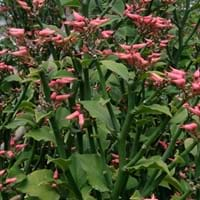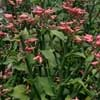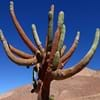Life Span
Perennial
Perennial
Origin
Madagascar
Caribbean, South America
Types
Euphorbia tithymaloides tithymaloides, Euphorbia tithymaloides angustifolia
Pinks Mammoth, African Pride, Late Gold, Geffner, Hilary White
Habitat
subtropical regions, Tropical regions
Warm and moist climatic conditions
USDA Hardiness Zone
9-13
10-13
AHS Heat Zone
Not Available
12-9
Sunset Zone
H2, 13, 23, 24
Not Available
Habit
Upright/Erect
Upright/Erect
Flower Color
Purple, Orange, Pink, Magenta
Yellow green
Flower Color Modifier
Not Available
Bicolor
Fruit Color
Not Available
Light Green, Sea Green
Leaf Color in Spring
Green, Gray Green, Burgundy
Light Green
Leaf Color in Summer
Green, Gray Green
Light Green
Leaf Color in Fall
Green, Gray Green
Light Green
Leaf Color in Winter
Green, Gray Green
Light Green
Leaf Shape
Ovate
oblong or narrow-lanceolate
Plant Season
Spring, Summer, Fall, Winter
Summer
Sunlight
Full Sun, Partial Sun
Full Sun, Partial Sun
Type of Soil
Loam, Sand
Loam, Sand
The pH of Soil
Neutral, Alkaline
Acidic, Neutral, Alkaline
Soil Drainage
Well drained
Well drained
Bloom Time
Late Spring, Early Summer, Summer, Indeterminate
Early Summer, Summer
Tolerances
Drought
Drought
Where to Plant?
Container, Ground, Pot
Container
How to Plant?
Seedlings, Softwood cuttings
Seedlings
Plant Maintenance
Medium
Medium
Watering Requirements
Average Water Needs, Do Not over Water
Do Not over Water, Does not require regular watering
In Summer
Lots of watering
Lots of watering
In Spring
Moderate
Moderate
In Winter
Average Water
Average Water
Soil pH
Neutral, Alkaline
Acidic, Neutral, Alkaline
Soil Type
Loam, Sand
Loam, Sand
Soil Drainage Capacity
Well drained
Well drained
Sun Exposure
Full Sun, Partial Sun
Full Sun, Partial Sun
Pruning
Remove damaged leaves, Remove dead branches, Remove dead leaves
Prune young trees into an open vase shape
Fertilizers
All-Purpose Liquid Fertilizer
Nitrogen
Pests and Diseases
Red blotch
Anthracnose, Diplodia rot, Leaf spot
Plant Tolerance
Drought
Drought
Flowers
Showy
Insignificant
Flower Petal Number
Single
Single
Foliage Texture
Bold
Medium
Foliage Sheen
Matte
Matte
Attracts
Hummingbirds
Fruit Bats
Allergy
Carcinogenic, Diarrhea, Skin irritation, Toxic
Oral Allergy
Aesthetic Uses
Cottage Garden, Showy Purposes
Not Used For Aesthetic Purpose
Beauty Benefits
Skin Problems
Promotes Healthy Hair, Promotes healthy skin
Environmental Uses
Air purification
Air purification
Medicinal Uses
Asthma, Emetic, Inflammation, Intestinal worms
Diabetes, Diarrhea
Part of Plant Used
Leaves, Root
Bark, Fruits, Seeds
Other Uses
Tea-like beverage can be brewed, Used as Ornamental plant, Used for its medicinal properties
Used to make hair tonic, Used to promote healthy blood flow during menstruation
Used As Indoor Plant
No
No
Used As Outdoor Plant
Yes
Yes
Garden Design
Container, Houseplant, Mixed Border, Rock Garden, Wall, Tropical
Fruit / Fruit Tree, Shade Trees, Tropical
Botanical Name
Euphorbia tithymaloides
ANNONA squamosa
Common Name
Devil's Backbone
Sugar Apple
In Hindi
Devil's Backbone
सीताफल
In German
Devil's Backbone
Zuckerapfel
In French
Backbone du Diable
Sugar Apple
In Spanish
El espinazo del diablo
Manzana de azúcar
In Greek
Devil's Backbone
ζάχαρη της Apple
In Portuguese
Espinha do Diabo
Pinha
In Polish
Kręgosłup diabła
Cukier Jabłko
In Latin
Narum diaboli
Sugar Apple
Phylum
Magnoliophyta
Magnoliophyta
Class
Magnoliopsida
Magnoliopsida
Order
Malpighiales
Magnoliales
Family
Crassulaceae
Annonaceae
Clade
Angiosperms, Eudicots, Rosids
Angiosperms, Magnoliids
Subfamily
Euphorbioideae
Maloideae
Number of Species
Not Available
Properties of Devils Backbone and Sugar Apple
Wondering what are the properties of Devils Backbone and Sugar Apple? We provide you with everything About Devils Backbone and Sugar Apple. Devils Backbone doesn't have thorns and Sugar Apple doesn't have thorns. Also Devils Backbone does not have fragrant flowers. Devils Backbone has allergic reactions like Carcinogenic, Diarrhea, Skin irritation and Toxic and Sugar Apple has allergic reactions like Carcinogenic, Diarrhea, Skin irritation and Toxic. Compare all the properties and characteristics of these two plants. Find out which of these plant can be used as indoor plant. If you are interested to decorate your house and garden, find out aesthetic uses, compare them and select the plant which will beautify your surrounding. Along with beautification, try comparing medicinal and edible uses of Devils Backbone and Sugar Apple and you can choose the plant having best and most benefits.
Season and Care of Devils Backbone and Sugar Apple
Season and care of Devils Backbone and Sugar Apple is important to know. While considering everything about Devils Backbone and Sugar Apple Care, growing season is an essential factor. Devils Backbone season is Spring, Summer, Fall and Winter and Sugar Apple season is Spring, Summer, Fall and Winter. The type of soil for Devils Backbone is Loam, Sand and for Sugar Apple is Loam, Sand while the PH of soil for Devils Backbone is Neutral, Alkaline and for Sugar Apple is Acidic, Neutral, Alkaline.
Devils Backbone and Sugar Apple Physical Information
Devils Backbone and Sugar Apple physical information is very important for comparison. Devils Backbone height is 90.00 cm and width 30.00 cm whereas Sugar Apple height is 460.00 cm and width 610.00 cm. The color specification of Devils Backbone and Sugar Apple are as follows:
Devils Backbone flower color: Purple, Orange, Pink and Magenta
Devils Backbone leaf color: Green, Gray Green and Burgundy
Sugar Apple flower color: Yellow green
- Sugar Apple leaf color: Light Green
Care of Devils Backbone and Sugar Apple
Care of Devils Backbone and Sugar Apple include pruning, fertilizers, watering etc. Devils Backbone pruning is done Remove damaged leaves, Remove dead branches and Remove dead leaves and Sugar Apple pruning is done Prune young trees into an open vase shape. In summer Devils Backbone needs Lots of watering and in winter, it needs Average Water. Whereas, in summer Sugar Apple needs Lots of watering and in winter, it needs Average Water.





